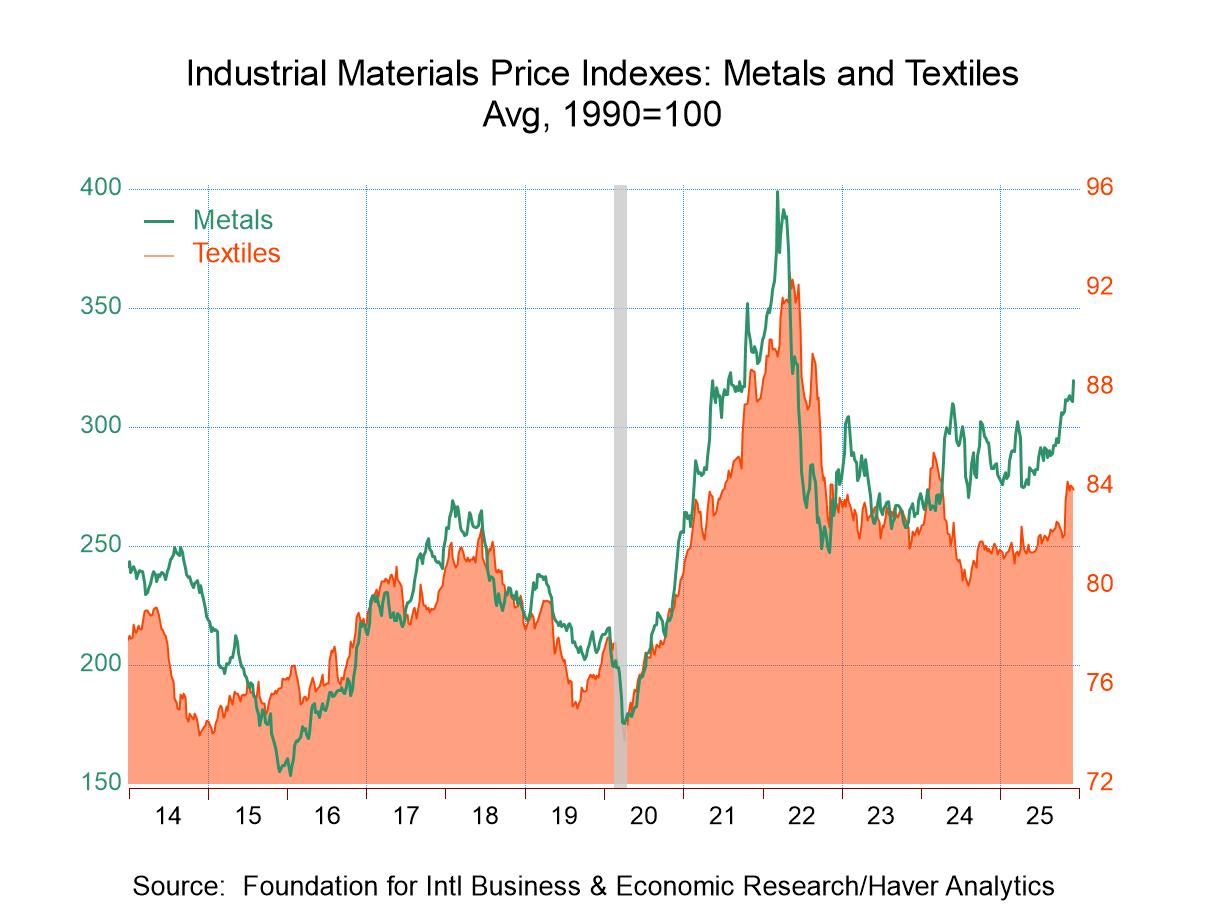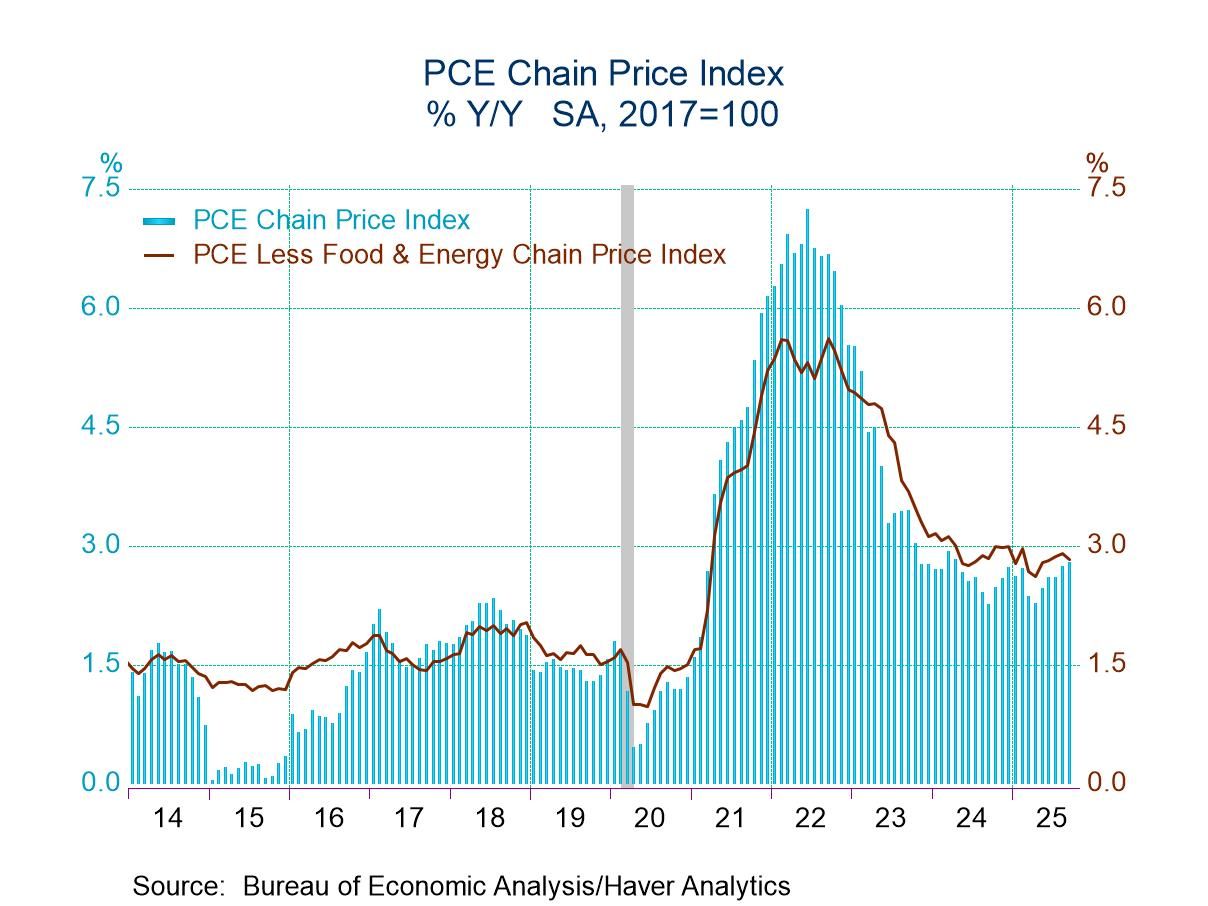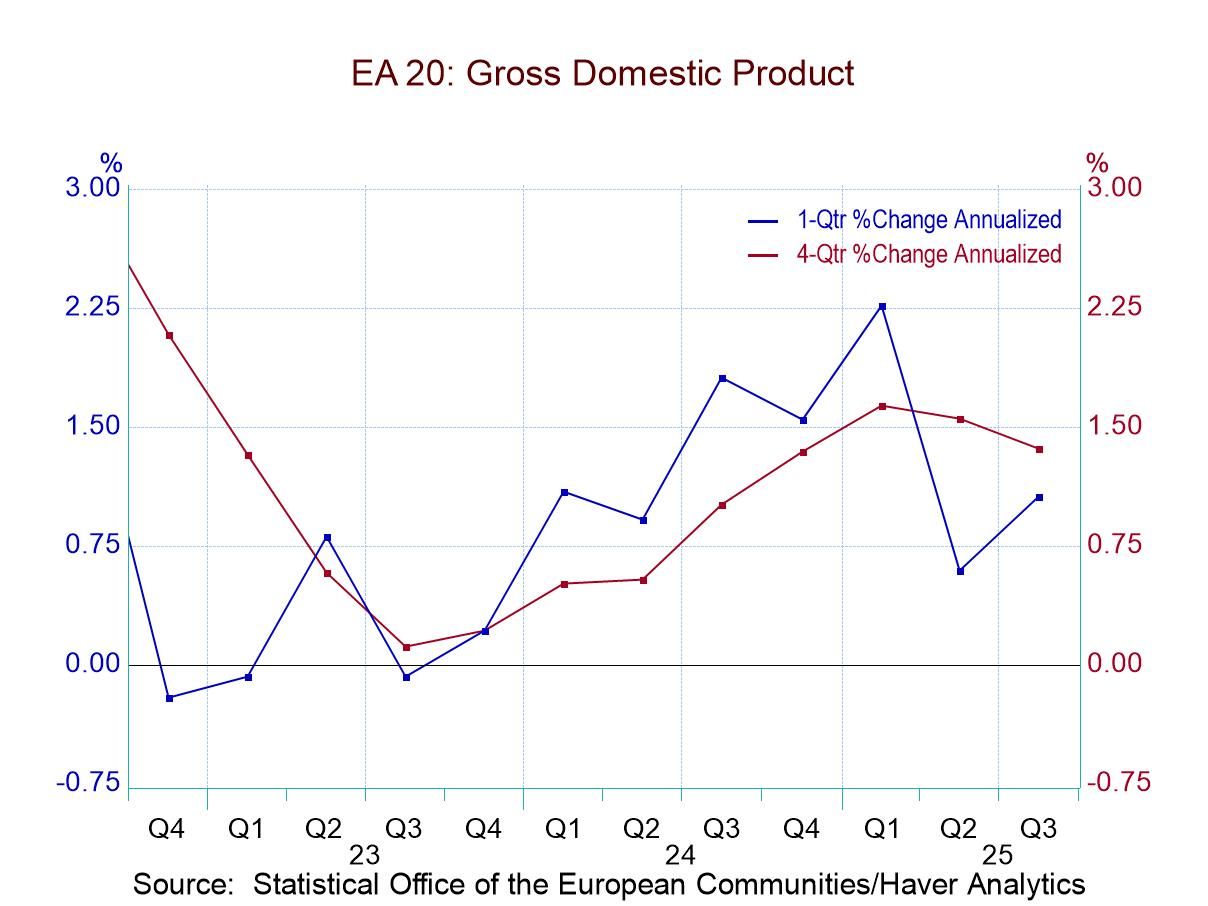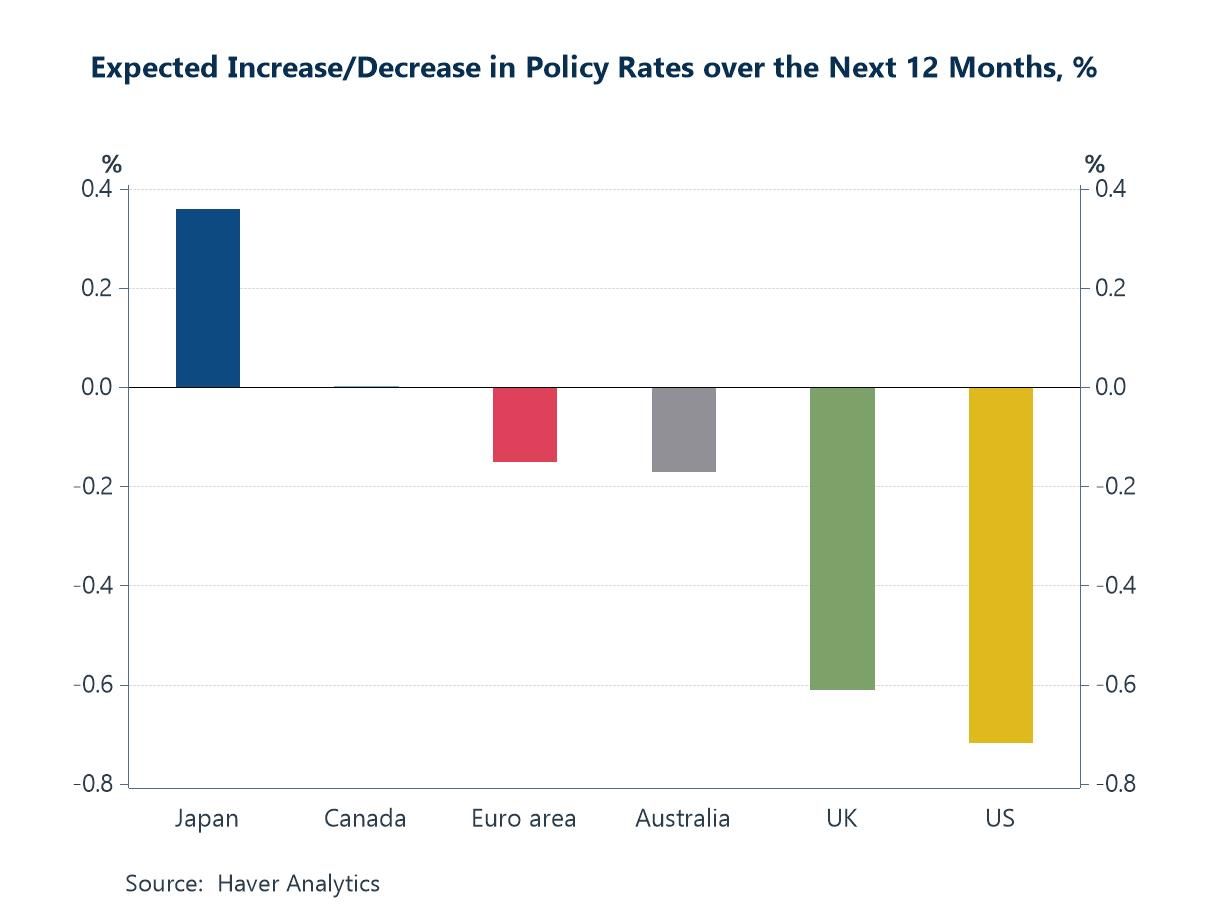 Global| Sep 24 2009
Global| Sep 24 2009U.S. Initial Claims For Jobless Insurance Near Cycle Low But Continuing Claims Hold Steady
by:Tom Moeller
|in:Economy in Brief
Summary
Initial claims for jobless insurance continue to suggest labor market improvement. The Labor Department indicated that last week claims fell 21,000 to 530,000. It was the fourth decline in the last five weeks and left claims near [...]
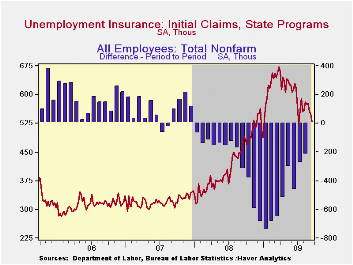 Initial
claims for jobless insurance continue to suggest labor market
improvement. The Labor Department indicated that last week claims fell
21,000 to 530,000. It was the fourth decline in the last five weeks and
left claims near their lowest level since early-January. The latest
level was down from the March peak of 674,000 and the weekly decline
exceeded expectations for a drop to 550,000 claims.
Initial
claims for jobless insurance continue to suggest labor market
improvement. The Labor Department indicated that last week claims fell
21,000 to 530,000. It was the fourth decline in the last five weeks and
left claims near their lowest level since early-January. The latest
level was down from the March peak of 674,000 and the weekly decline
exceeded expectations for a drop to 550,000 claims.
In contrast, an
earlier decline in continuing claims for unemployment insurance has
slowed. During the latest week continuing claims fell 123,000 after a
158,000 rise during the prior period, though they were down by 11% from
the late-June high. 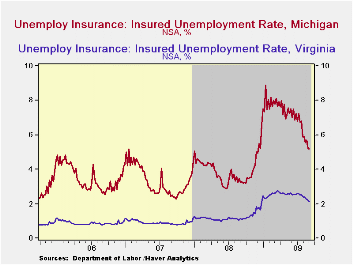 Continuing claims provide an indication of workers'
ability to find employment. The four-week average of continuing claims
fell modestly to 6,182,500. The series dates back to
1966. · Extended benefits for unemployment insurance
held steady at 438,053 as worker rehiring continued weak. The latest
level is off just slightly from the July high.
Continuing claims provide an indication of workers'
ability to find employment. The four-week average of continuing claims
fell modestly to 6,182,500. The series dates back to
1966. · Extended benefits for unemployment insurance
held steady at 438,053 as worker rehiring continued weak. The latest
level is off just slightly from the July high.
The insured rate of unemployment dipped slightly to 4.6% and was near the lowest level since mid-April. The rate reached a high of 5.2% during late-June. During the last ten years, there has been a 93% correlation between the level of the insured unemployment rate and the overall rate of unemployment published by the Bureau of Labor Statistics.
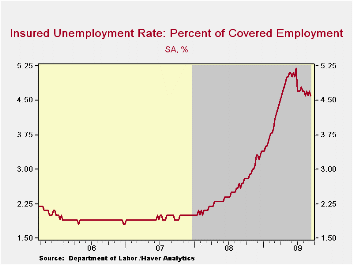 The highest insured unemployment rates in the week ending September 5
were in Puerto Rico (6.7 percent), Oregon (5.6), Nevada (5.4),
Pennsylvania (5.4), Michigan (5.2), Wisconsin (4.9), California (4.8),
New Jersey (4.8), Connecticut (4.7), North Carolina (4.7), and South
Carolina (4.7). The lowest rates were in South Dakota (1.1) and North
Dakota (1.4), Virginia (2.2), Wyoming (2.6), Texas (2.7), Maine (2.8),
Colorado (3.0), Minnesota (3.3), Maryland (3.4), Mississippi (3.8),
Florida (4.0), New York (4.1), and Georgia (4.1).
The highest insured unemployment rates in the week ending September 5
were in Puerto Rico (6.7 percent), Oregon (5.6), Nevada (5.4),
Pennsylvania (5.4), Michigan (5.2), Wisconsin (4.9), California (4.8),
New Jersey (4.8), Connecticut (4.7), North Carolina (4.7), and South
Carolina (4.7). The lowest rates were in South Dakota (1.1) and North
Dakota (1.4), Virginia (2.2), Wyoming (2.6), Texas (2.7), Maine (2.8),
Colorado (3.0), Minnesota (3.3), Maryland (3.4), Mississippi (3.8),
Florida (4.0), New York (4.1), and Georgia (4.1).
The unemployment insurance claims data is available in Haver's WEEKLY database and the state data is in the REGIONW database.
Financial Crises Tend to Have Long Impact on the Economy from the International Monetary Fund can be found here.
| Unemployment Insurance (000s) | 09/19/09 | 09/12/09 | 09/05/09 | Y/Y | 2008 | 2007 | 2006 |
|---|---|---|---|---|---|---|---|
| Initial Claims | 530 | 551 | 557 | 9.3% | 420 | 321 | 313 |
| Continuing Claims | -- | 6,138 | 6,261 | 71.4% | 3,342 | 2,552 | 2,459 |
| Insured Unemployment Rate (%) | -- | 4.6 | 4.7 | 2.7 (09/2008) | 2.5 | 1.9 | 1.9 |
Tom Moeller
AuthorMore in Author Profile »Prior to joining Haver Analytics in 2000, Mr. Moeller worked as the Economist at Chancellor Capital Management from 1985 to 1999. There, he developed comprehensive economic forecasts and interpreted economic data for equity and fixed income portfolio managers. Also at Chancellor, Mr. Moeller worked as an equity analyst and was responsible for researching and rating companies in the economically sensitive automobile and housing industries for investment in Chancellor’s equity portfolio. Prior to joining Chancellor, Mr. Moeller was an Economist at Citibank from 1979 to 1984. He also analyzed pricing behavior in the metals industry for the Council on Wage and Price Stability in Washington, D.C. In 1999, Mr. Moeller received the award for most accurate forecast from the Forecasters' Club of New York. From 1990 to 1992 he was President of the New York Association for Business Economists. Mr. Moeller earned an M.B.A. in Finance from Fordham University, where he graduated in 1987. He holds a Bachelor of Arts in Economics from George Washington University.



